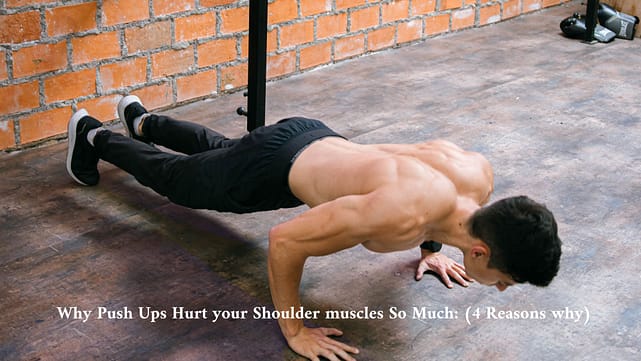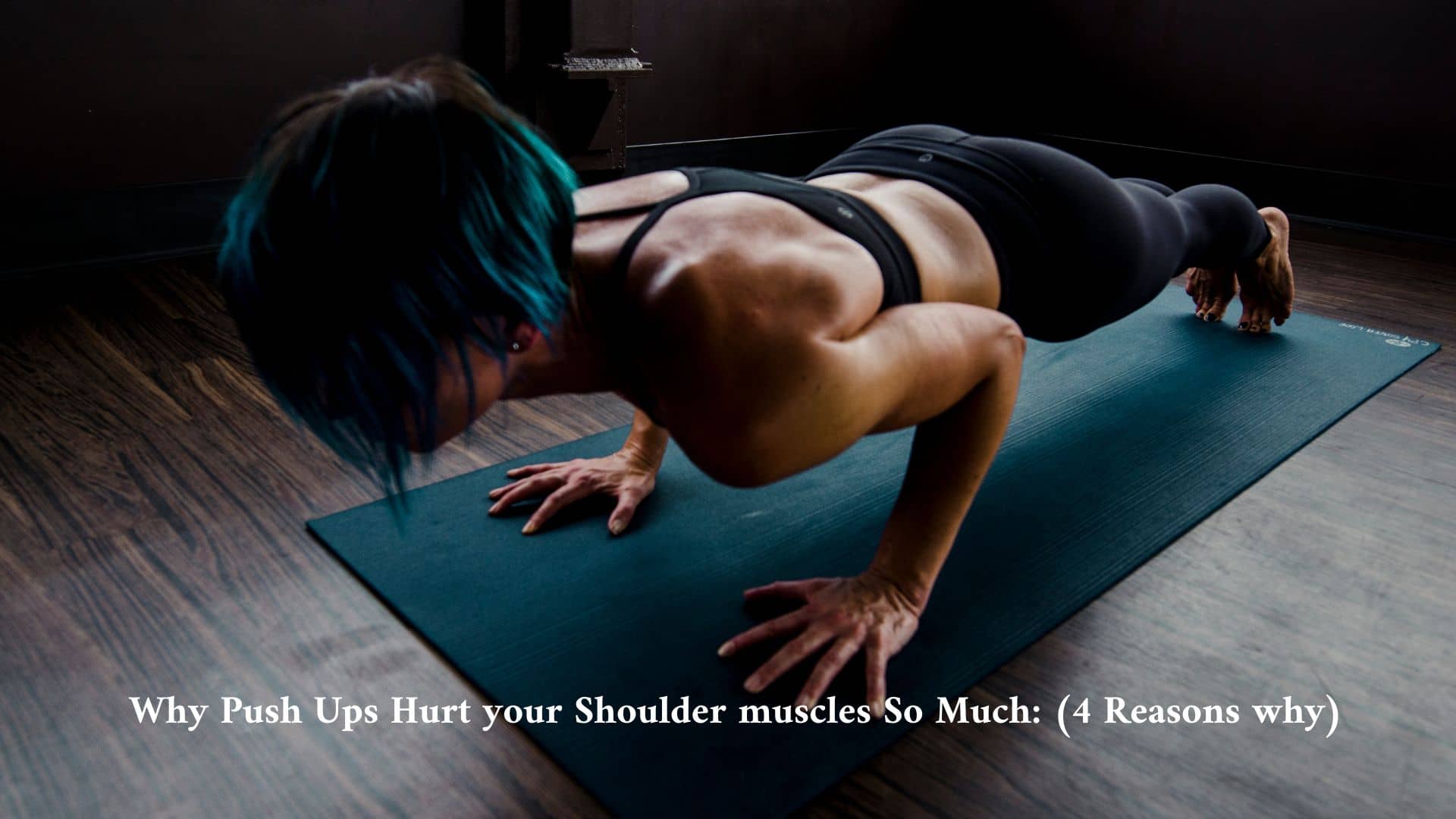Here are four possible reasons why push-ups may hurt your shoulder muscles: Poor Form, Weak Shoulder Muscles, Overuse, and Injury or Inflammation, If you have a pre-existing shoulder injury or inflammation, push-ups can exacerbate the problem and cause pain. In this case, it may be best to avoid push-ups altogether or modify the exercise to reduce the strain on your shoulders.
When you perform a push-up, your shoulders are required to work in conjunction with other muscle groups to support your body weight.
If your hands are placed too far apart or too close together, it can cause your shoulder muscles to work at an angle that is not optimal or safe for your joints.
This can result in excessive pressure being placed on the shoulder muscles, which can lead to pain and discomfort.
For instance, if your hands are placed too far apart, it can cause your shoulders to be overly externally rotated, putting excessive pressure on the rotator cuff muscles.
On the other hand, if your hands are too close together, it can cause your shoulders to be overly internally rotated, putting pressure on the anterior deltoids.
To perform a push-up with proper form, you should place your hands shoulder-width apart and keep your elbows close to your body.
This will ensure that your shoulder muscles are working in the most efficient and safe manner possible, reducing the risk of injury and pain.

Here I provide you with a summary of the reasons why push-ups can hurt your shoulder muscles:
Reason |
Explanation |
|---|---|
| Weak Shoulder Muscles | If your shoulder muscles are weak or underdeveloped, they may not be able to handle the strain of a push-up. |
| Overuse | Performing too many push-ups or performing them too frequently can cause fatigue and soreness in the shoulder muscles. |
| Injury or Inflammation | If you have a pre-existing shoulder injury or inflammation, push-ups can worsen the condition and cause pain. |
It’s important to identify the underlying cause of your shoulder pain when performing push-ups, as this can help you determine the best course of action to prevent further injury and discomfort.
Weak shoulder muscles.
When performing a push-up, your shoulder muscles need to work in conjunction with other muscle groups to support your body weight.
If your shoulder muscles are weak or underdeveloped, they may not be able to handle the strain of a push-up, leading to pain or discomfort.
To strengthen your shoulder muscles, you can perform targeted exercises such as shoulder presses, lateral raises, and front raises.
These exercises will help to build the strength and endurance of your shoulder muscles, allowing them to handle the stress of a push-up.
It’s important to start with light weights and gradually increase the intensity and frequency of your workouts to avoid overexertion and injury.
Additionally, practicing modified push-up variations can also help to build shoulder muscle strength. For example, starting with push-ups on your knees or against a wall can help to gradually build strength and improve form before attempting a full push-up.
By strengthening your shoulder muscles through targeted exercises and modified push-up variations, you can improve your overall fitness and reduce the risk of pain or injury during push-ups.
Overuse
When you engage in physical activity, it’s important to give your muscles adequate rest and recovery time to prevent overuse injuries.
If you perform too many push-ups or perform them too frequently, your shoulder muscles may become fatigued and sore, leading to pain and discomfort.
Overuse injuries occur when the muscles, tendons, or ligaments are subjected to repetitive stress without adequate rest and recovery time.
In the case of push-ups, if you perform too many repetitions or sets without giving your muscles time to recover, you may experience pain or discomfort in your shoulder muscles.
To prevent overuse injuries, it’s important to vary your workouts and avoid performing the same exercises every day.
You should also gradually increase the intensity and frequency of your workouts to avoid overexertion.
Additionally, be sure to give your muscles time to rest and recover between workouts by taking rest days and engaging in activities that promote muscle recovery, such as foam rolling and stretching.
By giving your shoulder muscles adequate rest and recovery time, you can prevent overuse injuries and enjoy the benefits of push-ups without experiencing pain or discomfort.
Shoulder injury or inflammation
If you have a pre-existing shoulder injury or inflammation, performing push-ups can worsen the condition and cause pain and discomfort.
This is because push-ups put a significant amount of pressure on the shoulders and can exacerbate any existing injuries or inflammation.
In such cases, it may be best to avoid push-ups altogether until the injury or inflammation has healed completely.
However, if you still want to perform push-ups, you can modify the exercise to reduce the strain on your shoulders.
For example, you can perform push-ups on an incline surface, such as a bench or wall, to reduce the amount of weight and pressure on your shoulders.
It’s also important to consult with a healthcare professional or physical therapist before attempting to perform push-ups with a pre-existing shoulder injury or inflammation.
They can provide you with specific exercises and modifications to help you safely and effectively strengthen your shoulders without exacerbating the condition.
Remember, pushing through pain or discomfort can worsen your condition and lead to further injury. It’s always better to take the time to properly heal and strengthen your shoulders before attempting any strenuous exercises like push-ups.
My final thought and conclusion
In conclusion, there are several reasons why push-ups can cause pain and discomfort in your shoulder muscles.
Weak shoulder muscles, overuse, and pre-existing injuries or inflammation are all potential causes of shoulder pain during push-ups. If you are experiencing shoulder pain during push-ups, it’s important to identify the underlying cause and take steps to prevent further injury and discomfort.
This may include modifying the exercise, strengthening your shoulder muscles, or seeking medical advice from a healthcare professional or physical therapist.
By properly addressing the underlying cause of your shoulder pain, you can safely and effectively perform push-ups and other exercises to strengthen and tone your upper body.


